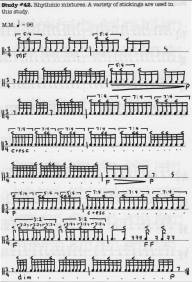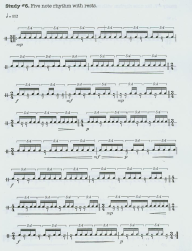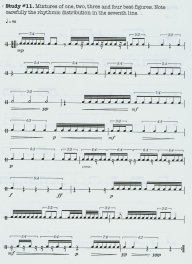Seafroggys
Silver Member
Learning the hard stuff makes you better at the easy stuff.
I got Sticking Patterns a few months back as well, I made my way a decent way through it and then just kinda stopped, thinking...."Why?" It wasn't the quints and septs so much, as it was the weird sticking patterns it was having me do.
In the past year I've been working quite a bit on quints and septs and even though I find little context in using them in most the music I do, its still fun as hell to learn and think of ways to play. At certain tempos for solos or longer drum breaks, quints are the perfect balance between "slow" "unimpressive" 16th notes and "this is a little fast for me to be comfortable" sextuplets. You're not gonna use them a lot, but if you need them for that one thing, they're just the ticket.
I got Sticking Patterns a few months back as well, I made my way a decent way through it and then just kinda stopped, thinking...."Why?" It wasn't the quints and septs so much, as it was the weird sticking patterns it was having me do.
In the past year I've been working quite a bit on quints and septs and even though I find little context in using them in most the music I do, its still fun as hell to learn and think of ways to play. At certain tempos for solos or longer drum breaks, quints are the perfect balance between "slow" "unimpressive" 16th notes and "this is a little fast for me to be comfortable" sextuplets. You're not gonna use them a lot, but if you need them for that one thing, they're just the ticket.




